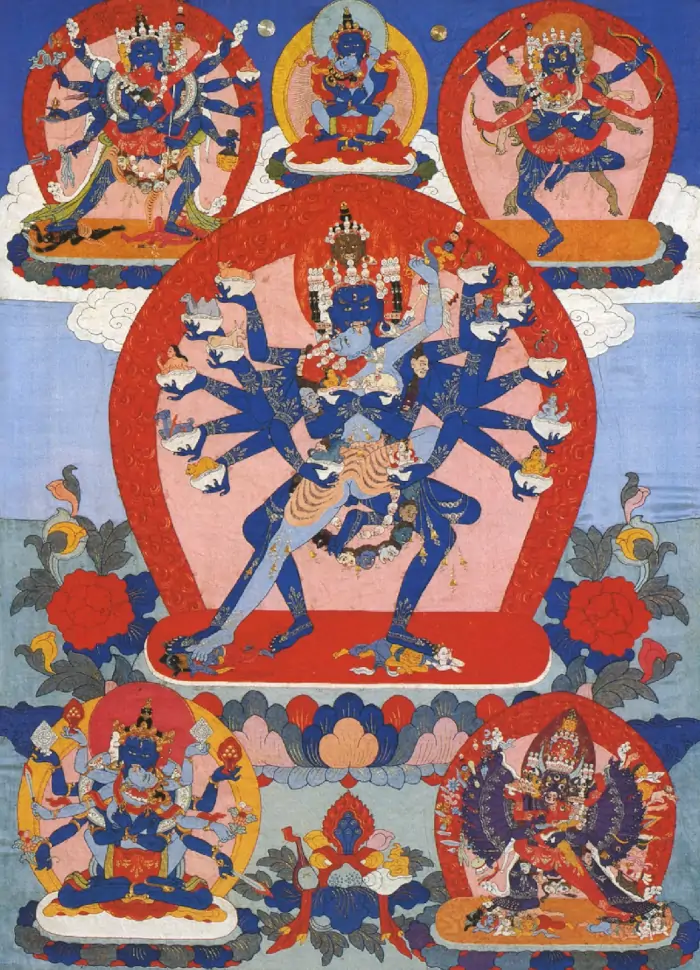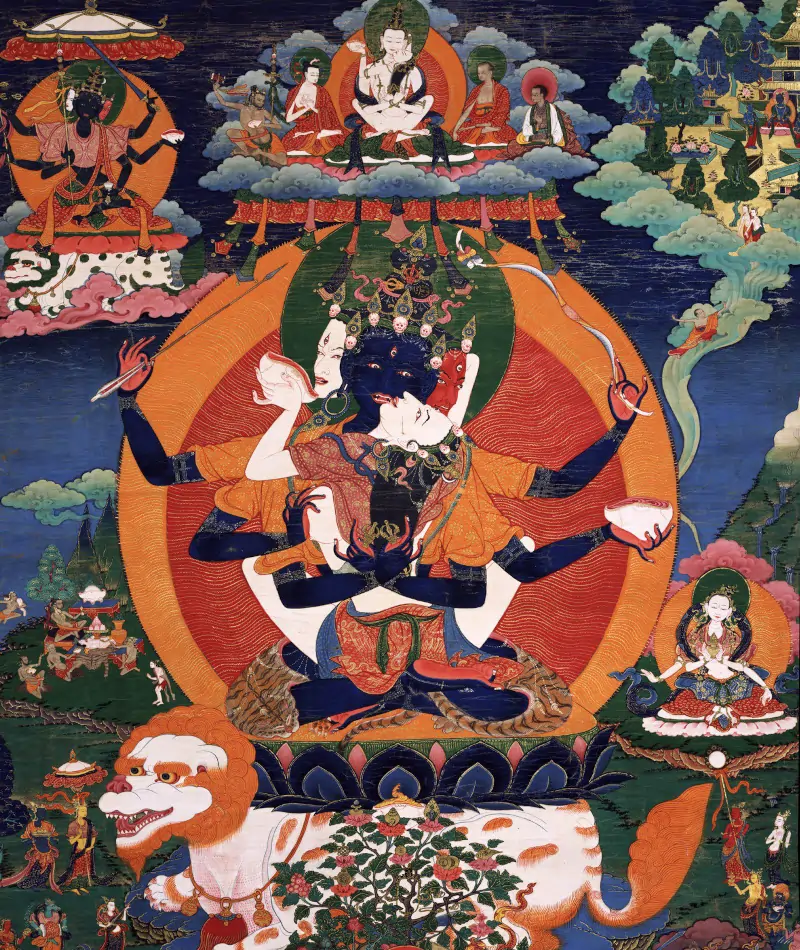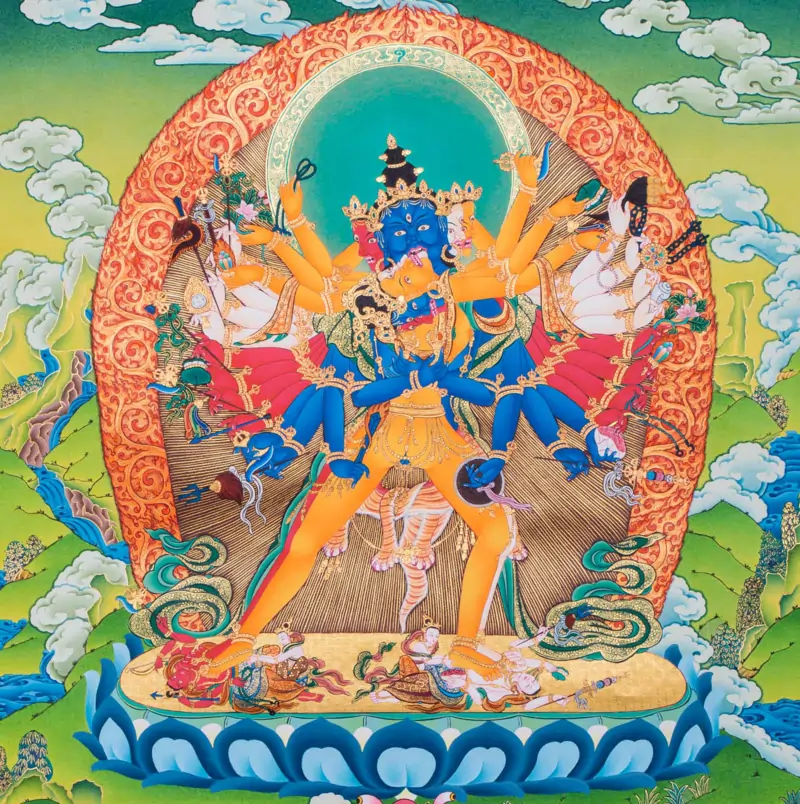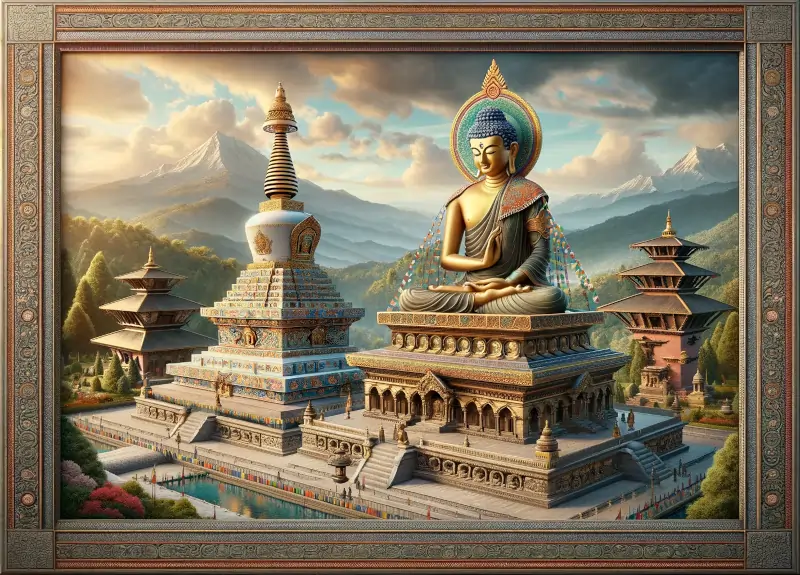Introduction to Kul Devata: The Heartbeat of Spiritual Practice
At the heart of every Bajracharya family is their Kul Devata (Sanskrit: कुल देवता), the principal family deity that represents more than just a religious symbol. These deities are also referred to as Ista Devata (Sanskrit: इष्ट देवता), meaning “personal favorite deities”, and are sometimes identified as Tutelary Deities or Yidams in Tibetan Buddhism. A Kul Devata, Ista Devata, Tutelary Deity, or Yidam serves as a personal meditation deity chosen based on an individual’s spiritual practice or needs. This choice reflects a deep personal connection and emphasizes divine qualities as a focus for spiritual growth.
The significance of the Kul Devata lies in its profound connection to the mind. These deities mirror the nature of the mind, earning them the description of being “mind-bound.” Bajracharyas practicing Vajrayana Buddhism engage in advanced meditative visualizations of deities such as Chakrasamvara and Vajravarahi, Hevajra and Nairatmya, Yogambara and Jnana, and Kalachakra and Visvamata. These visualizations are not mere creations of imagination but are deeply rooted in spiritual practices where the deities manifest from seed syllables arising from a non-dual state of mind or emptiness, symbolizing the true nature of the mind.
These deities embody the Sambhogakaya Buddha forms, emanating from an enlightened mind and representing enlightened wisdom and qualities. This concept underscores the profound connection between spiritual practice, mental states, and divine embodiment, illustrating the transformative journey toward enlightenment.
Chakrasamvara & Vajravarahi: The Union of Wisdom and Bliss
Chakrasamvara and Vajravarahi, in Sanskrit चक्रसंवर and वज्रवाराही, sometimes also called Chakrasamvara and Vajrayogini (वज्रयोगिनी), represent a powerful duo in the Vajrayana Buddhist pantheon. Chakrasamvara, often depicted with a multitude of arms, symbolizes the ultimate state of bliss and compassion, while Vajravarahi, embodies transcendent wisdom. Their union is not just a marital pairing but a profound representation of the balance and harmony between wisdom and blissful compassion, crucial elements in the journey toward enlightenment. Read more…
To recognize Chakrasamvara and Vajrabarahi, it’s important to note that Chakrasamvara is depicted in blue, with multiple heads and arms, and a calmer expression. He is shown embracing the red Vajrabarahi (Vajrayogini), characterized by a single head and standard arms and legs, representing feminine strength.

Hevajra & Nairatmya: The Dance of Emptiness and Insight
Hevajra and Nairatmya, in Sanskrit हेबज्र and नैरात्मा, Nairatmya also known in Newari culture as Guheswari (गुहेस्वरी), present another critical pair within the Bajracharya tradition. Hevajra, often shown with multiple faces and arms, encapsulates the complete essence of wisdom and compassion. Nairatmya, his consort, complements this by representing the deep insight that arises from understanding emptiness. Their interaction symbolizes a dance that embodies the merging of wisdom and emptiness, capturing the essence of understanding the true nature of reality and self-realization. Read more…
To recognize Hevajra and Nairatmya, observe that Hevajra is portrayed in dark blue, with multiple heads and arms, and a fierce expression, embracing Nairatmya, who is depicted in light blue, with a single head, standard hands and legs, and adorned in tiger skin.

Yogambara & Jnana: Harmonizing Practice and Enlightenment
Yogambara and Jnana, in Sanskrit योगाम्बर and ज्ञान, collectively also known as Mhepi Ajima (म्हयपी अजिमा) or Yogambara Gyaneswari (योगाम्बर ज्ञानेश्वरी), hold a special place in the hearts of Bajracharya practitioners. Yogambara, symbolizing protection and spiritual strength, embodies the systematic journey towards spiritual enlightenment. Jnana, symbolizing wisdom, is the perfect counterpart, offering the necessary knowledge for enlightenment. Their relationship emphasizes the importance of harmonizing practical spiritual discipline with the wisdom that guides it. Read more…
To recognize Yogambara and Jnana, observe that Yogambara is illustrated in blue, featuring multiple arms, and is shown embracing Jnana, who is depicted in white with a single head and standard arms and legs.

Kalachakra & Visvamata: The Cosmic Rhythm of Time and Knowledge
Kalachakra and Visvamata, in Sanskrit कालचक्र and विश्वमाता, are revered for their representation of the cosmic order. Kalachakra, known as the Wheel of Time, embodies the cycles of existence and the intricate nature of the cosmos in a complex and symbolic manner. Visvamata, his consort, signifies a comprehensive understanding of these cosmic patterns. Their worship involves a deep engagement with the concepts of time, space, and universal consciousness. Read more…
To recognize Kalachakra and Visvamata, which differ from other deities, it is essential to note that Kalachakra is portrayed with a blue front-facing head, and his arms are sectioned into groups of four, each group having their unique color. He is shown in an embrace with the yellow/orange Visvamata, who is characterized by her multiple heads and arms.

Conclusion: The Spiritual Compass of the Bajracharya
In summary, the Kul Devatas of the Bajracharya families are not just figures of worship but are integral to understanding and experiencing the path of Vajrayana Buddhism. Each pair, from Chakrasamvara & Vajravarahi to Kalachakra & Visvamata, represents essential aspects of the journey towards enlightenment. They are visualized embodiments of the enlightened mind, guiding practitioners in their spiritual journey. The Bajracharya’s devotion to these deities reflects a deep, intrinsic connection to the nature of mind and reality, offering a unique and profound path to spiritual fulfillment.

